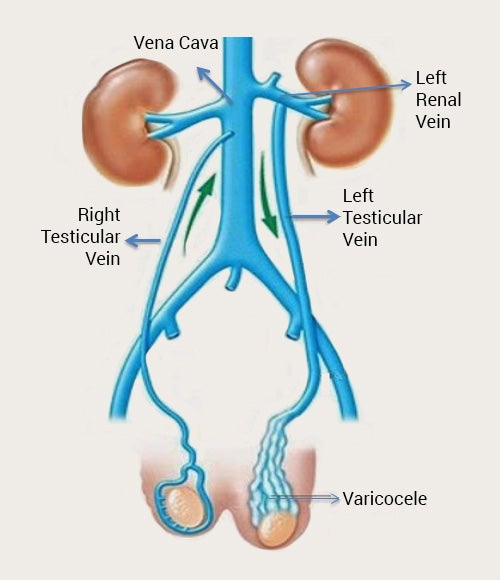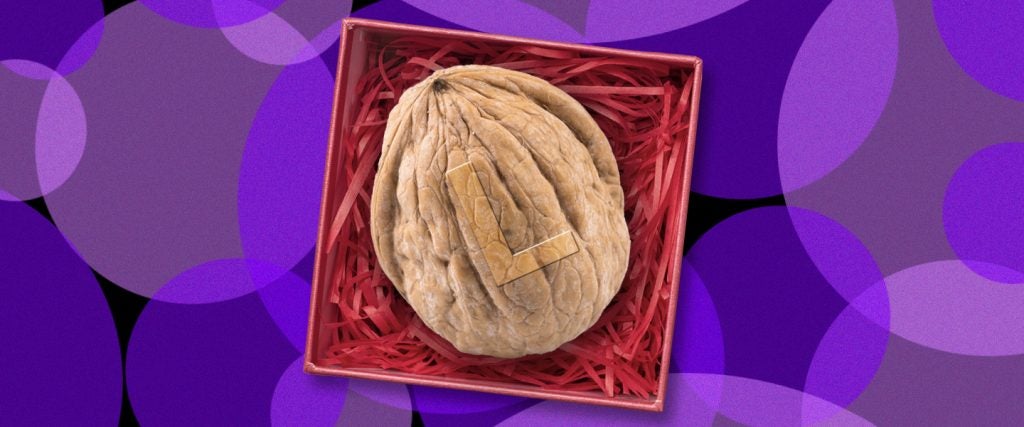April is Testicular Cancer Awareness Month, and we’re grabbing it right by the balls. Every day for the entire month, we will be publishing a new story aimed at getting men to better consider — and cherish — their family jewels in hopes of helping prevent a diagnosis that, if caught early enough, shouldn’t prove fatal. Read everything here.
People promise to hand over their left nut all the time. “I bet my left nut you can’t make that shot,” they say. “I’d give my left nut for a good gyro,” they swear. Rarely do you hear someone volunteer a right nut, though. In Planes, Trains and Automobiles, John Candy tells Steve Martin, “Six bucks and my right nut says we’re not landing in Chicago,” but that’s the exception. The vast, vast majority of the time, it’s the left ball being offered as a sacrifice and so, my simple question is, why?
Is there something wrong with the right nut that makes it an undesirable prize? Conversely, is the left nut somehow expendable? I’d give my right nut to have an answer — okay, maybe not quite, but I did consult a flurry of experts about it.
Naturally, the go-to professionals to weigh in on this matter would be urologists. The first thing they told me was that there is, indeed, some anatomical differences between a right and left testicle. “The left gonadal vein drains into the renal vein, whereas the right drains directly into the inferior vena cava,” urologist Rena Malik explains. As intimately familiar as I am with my own anatomy, I don’t really know one ball tube from another, but this diagram should clarify it:

Because of the different ways they drain blood, it’s more common for guys to develop a “varicocele” — or dilated vein — on their left side. (The diagram above shows what a varicocele looks like). According to Alex Shteynshlyuger, the director of urology at New York Urology Specialists, this increases the likelihood of testicle pain on the left side as opposed to the right.
Additionally, Darshan Patel, a professor of urology at the University of California, San Diego, tells me that the right testicle is generally bigger than the left, and it tends to sit a little higher. The reason why is because it drops from your body first, and when the left one follows, it drops below the right one so that it isn’t within the body still. Also, testicles aren’t even because if they were, it would probably be a bit painful for every guy to have a mini Newton’s cradle between their legs.

What about sperm production, though? And is one nut more likely to develop testicular cancer? “While it hasn’t been proven — because of the much more common occurrence of a varicocele on the left side — it’s commonly thought that the right side is healthier and produces more sperm and testosterone,” says Patel. “Also, anecdotally, I’d say that a lot of people say that the left side is more common for testicular cancer.”
So, although far from “expendable,” the left testicle is smaller and is more likely to experience testicular pain. Moreover, the general consensus is that it also may produce less sperm and it might have increased occurrences of cancer. This actually makes a lot of sense as to why people would be willing to give their left nut as opposed to their right — it’s the weakest link!
Still, I don’t think your average Tom, Dick and Harry — particularly the latter two — know the intricate anatomical differences between their left and right testicles. Given that, I don’t know that science can concretely answer why the left testicle is so overwhelmingly chosen for surrender. So next, I turned to pop culture.
While Planes, Trains and Automobiles is a popular movie that volunteers John Candy’s right testicle, there are many more examples of the left nut being offered. For example, in Edward Scissorhands, after Edward electrocutes himself on TV, Anthony Michael Hall’s character says, “I’d give my left nut to see that again.”
It also appears to have been a favorite phrase of late novelist W.E.B. Griffin, as it shows up in at least three of his books. Meanwhile, in a slightly amended declaration, The Walking Dead character Abraham replies “I don’t give a monkey’s left nut,” when another character says they want to rest (this was before the show became fucking insufferable). Most recently, YouTube dipshit Joey Salads vowed to donate his left testicle to medical research if President Trump were impeached, which, apparently, he delivered on (though there appears to have been no such promise on his right testicle when his hero was impeached for the second time).
But the most famous use of the phrase may also be the very first time it was used — or at least used by a famous figure. In 1955, baseball great Ted Williams was talking to a reporter, and was lamenting how the press would prey upon him if he were to have a bad season. “You see those guys?” Williams said, pointing to the reporters. “They would give their left nut to see me have a bad year.”
Neither myself nor etymologist Barry Popik could find an earlier example of such voluntary nut-giving, though Popik notes that phrases like “I’d give my left arm” or “I’d give my right leg” go back much further. The oldest known example is from 1623, in Shakespeare’s play Timon of Athens, where the character Alcibiades defends a friend against the death penalty for a murder. To save his life, Alcibiades makes a compromise, offering up his friend’s right arm instead, saying, “His right arme might purchase his owne time.”
Still, none of that quite gets to the heart of the left ball preference in the “I’d give my left nut” phrase. Popik offers up a theory though: “Most people are right-handed, so they can somewhat get by without the left.” In other words, right-handed people may just be trying to keep their right-sided body parts.
For confirmation, I sought out perhaps the most credible expert possible, a man who actually gave up his left nut thanks to a cancer diagnosis. Voice actor Kevin M. Connolly, who was diagnosed with testicular cancer in 2018 thanks to a Deadpool PSA, says he’s right-handed, so he wouldn’t want to lose his right hand. “Same goes for anything on my right side,” he says. “The left side though? That would be fine.”
Connolly is a unique authority on the matter, so if he says that right-handers are less likely to want to part with right-sided body parts, that’s that in my mind. It would also explain the discrepancy between left-nut and right-nut offerings.
I guess to crack this nut, I didn’t need to give up a nut after all — I just needed the right kind of expertise.

